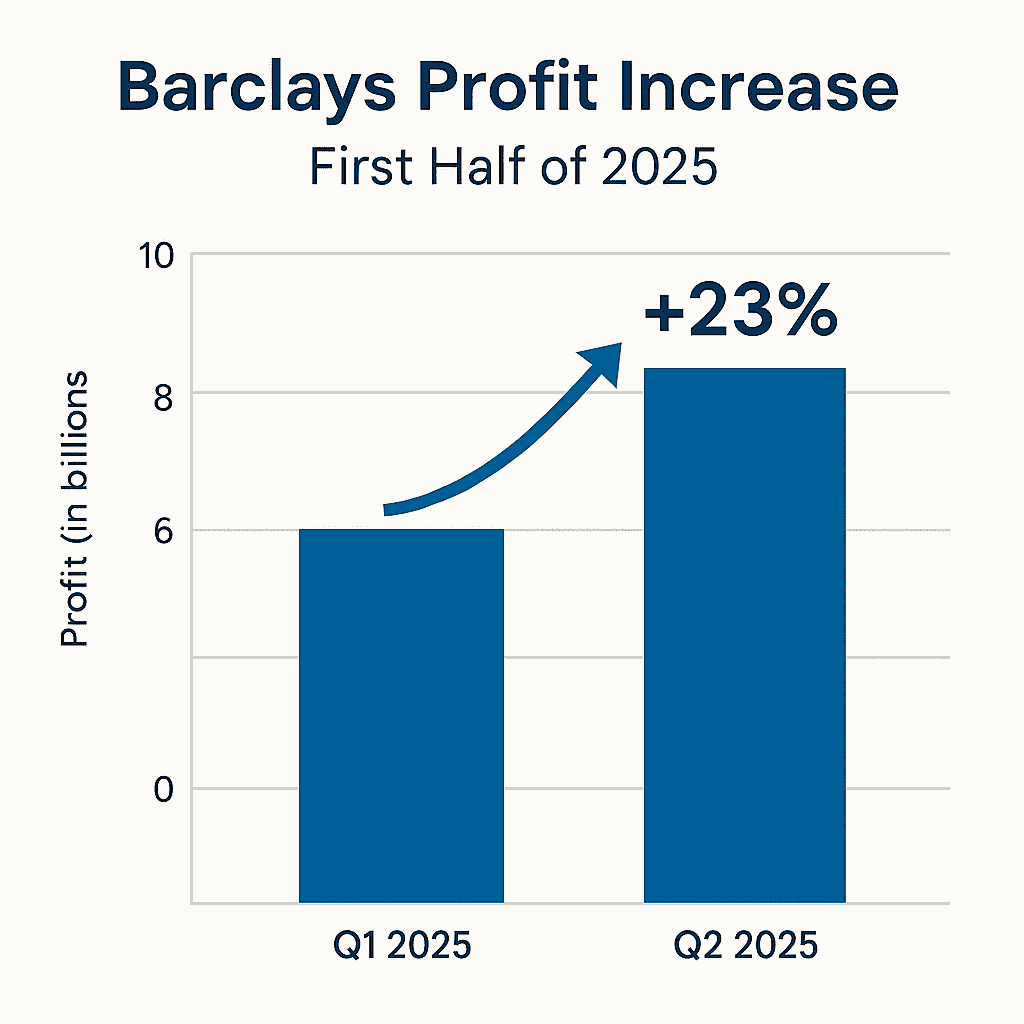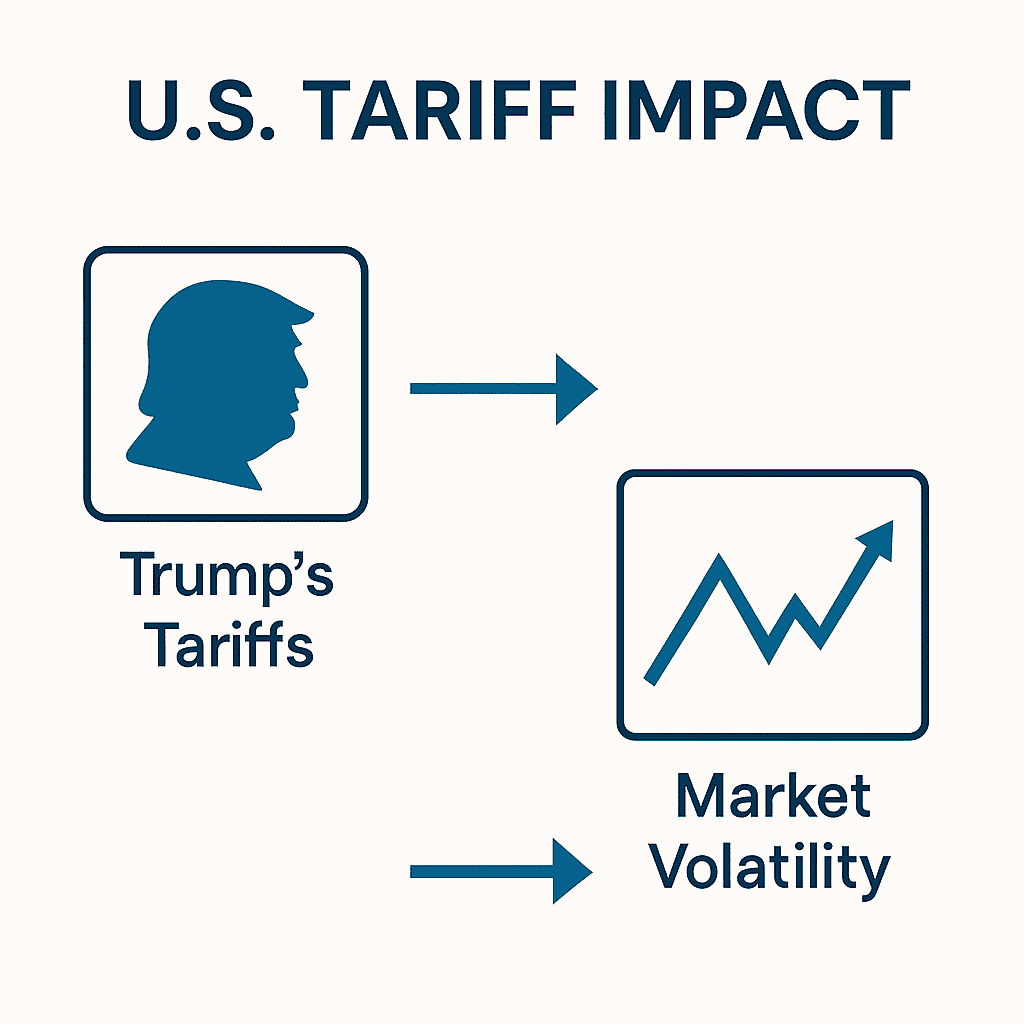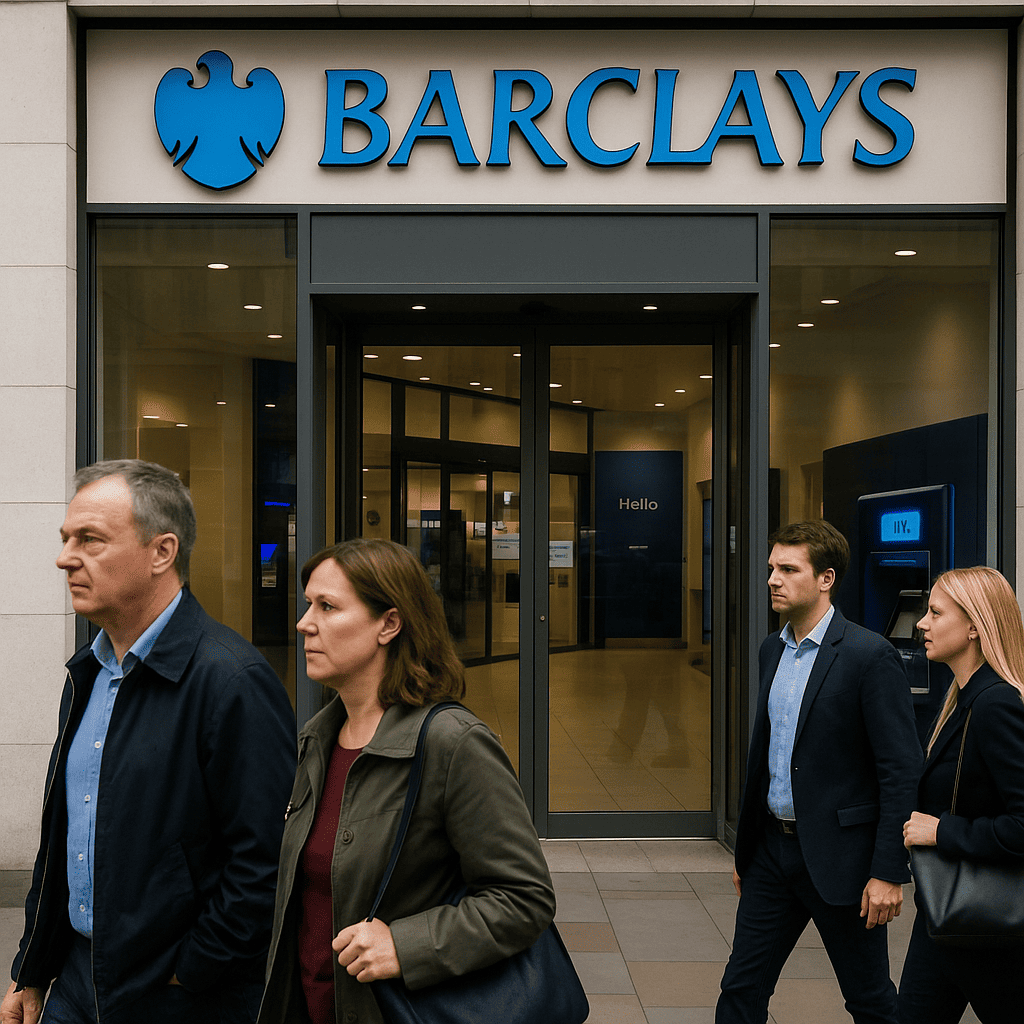When I saw Barclays posted a 23% profit jump, I had to do a double take.
What was driving Barclays Profit? Turns out, Trump’s latest round of trade tariffs sparked a trading storm—and Barclays rode the wave like a pro.
Between January and June, they pulled in £5.2 billion, beating analyst expectations. Their investment banking division? Absolutely thriving. Revenue from trading bonds, currencies, and commodities soared 26%. Even equity trading jumped 25%.
Meanwhile, they’re rewarding shareholders with £1.4 billion in dividends and buybacks.
So yeah, the chaos worked in their favor.
But here’s the real kicker—they’re shifting focus back to core banking too. Smart move?
Let’s dig into what this means for Barclays—and what it signals for the rest of the market.
Table of Contents
The Tariff Shock That Turned Into a Trading Goldmine

When I saw Barclays racked up a 23% jump in profit, I had to pause. That’s no small bump.
What sparked it? Surprisingly—Trump’s trade tariffs.
While most companies were scrambling to handle the ripple effects, Barclays leaned in. Their traders saw opportunity in the market chaos, and they pounced. The result? A hefty £5.2 billion in profit between January and June 2025. That’s above expectations and way ahead of their rivals in some areas.
Let’s unpack how this happened—and what it says about Barclays’ strategy going forward.
First—Here’s What the Numbers Say
Barclays crushed it on a few key fronts:
- £5.2 billion pre-tax profit in H1 2025
- Analysts had expected £4.96 billion
- A £1.4 billion payout to shareholders through dividends and share buybacks
- Investment bank revenue soared, thanks to trading in volatile markets
Their trading desks, especially in fixed income, currencies, and commodities (FICC), saw a 26% boost in revenue. That’s nearly double the average increase of major U.S. banks like JPMorgan and Goldman Sachs.
Equities trading also jumped 25%, outpacing the U.S. average of 18%.
Even with some weak spots—like a 16% drop in deal-making fees—the trading surge more than made up for it.
Why the Tariff Turmoil Helped Barclays Profit

Let’s be real—Trump’s trade policies have been anything but quiet. New tariffs. Trade deal uncertainty. Cross-border tension.
That kind of chaos makes markets unpredictable. And unpredictable markets? Traders love them. Because more volatility = more opportunities to buy low, sell high, and take calculated risks.
Barclays’ traders capitalized on it. They were already strong in FICC, and the wild swings in currency and bond markets gave them a perfect storm to profit from.
This isn’t luck. It’s positioning. Barclays didn’t just react—they were ready.
A Win for Investors, Too
Barclays didn’t keep the gains to themselves.
They rolled out:
- A £1 billion share buyback
- A 3 pence-per-share dividend
That adds up to £1.4 billion in total returns to shareholders—a 21% increase from the year before. For anyone holding Barclays stock, that’s a solid reason to smile.
It’s a smart move. With inflation and interest rates still top of mind, companies that show they can generate strong returns and reward shareholders tend to stand out.
But Wait—They’re Pulling Back on Investment Banking?
Yep. Even though their investment bank was the hero of this quarter, Barclays is starting to rebalance.
CEO C.S. Venkatakrishnan (just call him Venkat) said the bank is shifting spending away from the investment bank to refocus on UK retail and corporate banking.
That might sound odd at first. Why pull back from what’s working?
Here’s why it actually makes sense:
- Trading revenue is unpredictable and heavily market-dependent
- Retail and business banking offer more stable, recurring income
- Barclays wants to hit a 12%+ return on tangible equity by 2026, and long-term stability is key to that goal
So while the short-term profit came from trading, the long-term plan is balance and consistency.
A Legal Cloud on the Horizon
Not everything is sunshine.
Barclays flagged a potential financial hit related to an ongoing UK motor finance probe. The bank’s already set aside £90 million, but the final cost could be “materially different.”
The outcome depends on a Supreme Court ruling expected soon. And until then, it’s a bit of a waiting game.
It’s a reminder that even when the numbers look good, banks always have regulatory risk lurking in the background.
How Barclays Stacks Up to the Big U.S. Players
This part really caught my eye.
Let’s compare Barclays to the usual Wall Street giants:
| Metric | Barclays | US Banks (avg) |
|---|---|---|
| FICC Trading Revenue Growth | +26% | +14% |
| Equities Trading Revenue Growth | +25% | +18% |
| Investment Banking Fee Income | -16% | +13% |
Source: Reuters
So while Barclays lagged in advisory revenue (think M&A, IPOs), they absolutely dominated in trading performance.
That tells me Barclays knows where their strength lies—and leaned into it at the right time.
Can They Keep the Momentum Going?
Short answer? Maybe.
The challenge is, markets won’t always be this volatile. The trading boom they just benefited from was largely driven by tariffs and uncertainty. If things calm down, so might profits from those areas.
That’s likely why they’re pivoting back to retail and corporate banking. It’s less exciting but more predictable.
Still, their results suggest they’re on track to meet their long-term return goals. Analysts seem optimistic, too.
So, What’s the Bigger Picture?
Barclays took a global curveball (tariffs) and turned it into a profit surge.
That’s impressive.
They outperformed U.S. rivals in key trading areas, delivered big on shareholder returns, and are already planning their next move.
But they’re also realistic. They know this trading high won’t last forever, and they’re not betting the farm on it.
Instead, they’re building a more balanced business—one that can thrive in calm markets, too.
Key Takeaways (Just in Case You Skimmed)
- Barclays profit rose 23% in the first half of 2025
- Fueled by Trump’s tariff chaos and a trading frenzy
- Investment bank revenue from FICC and equities surged
- Shareholders scored £1.4 billion in dividends and buybacks
- The bank is slowly pivoting back to retail and corporate banking
- Legal risks are still looming from a UK finance probe
- Analysts believe Barclays is on track to hit its 2026 targets
Final Thoughts
Markets can be messy. Policies change fast. But some players know how to ride the waves better than others.
Barclays did just that this year.
They didn’t just survive tariff turmoil—they used it to come out ahead. And now, they’re setting themselves up for long-term gains with a more stable approach.
Whether you’re an investor, a market watcher, or just curious about how global drama turns into profit—this is a story worth following.
Want to know what the AI world has been upto? Read more about the secrets to Anthropic AI’s success.




Pingback: How a Vape Company’s Crypto Bet Shocked the Market (833% surge)